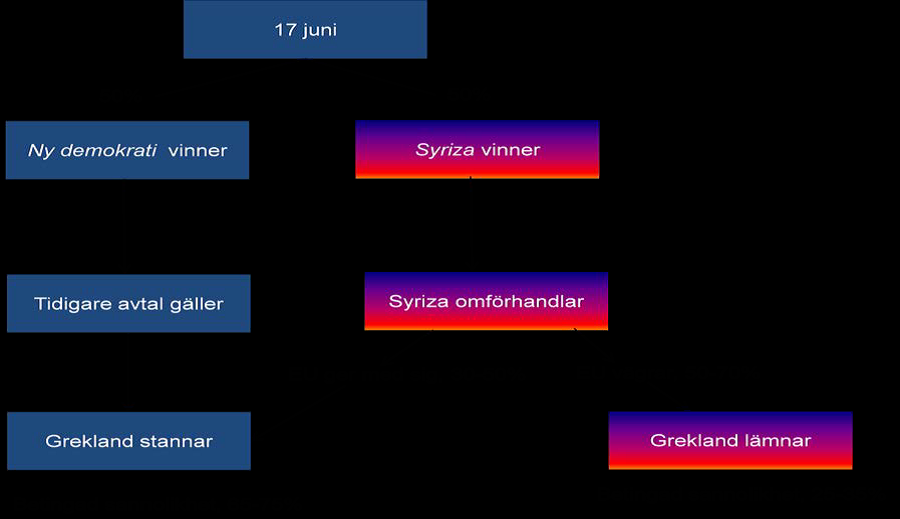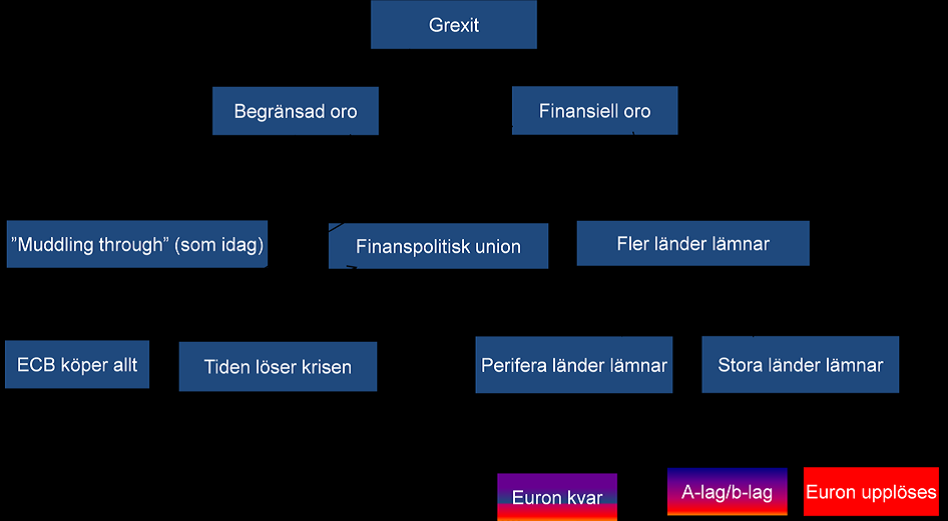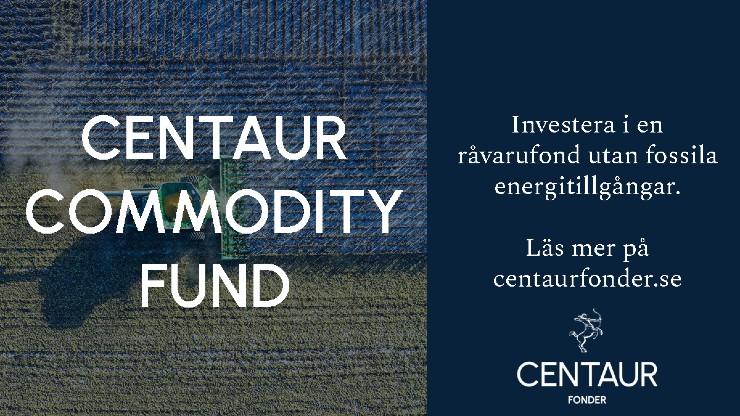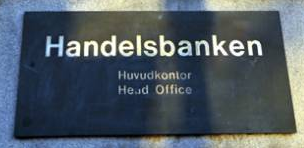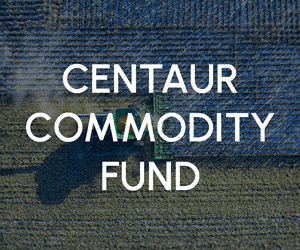Analys
SHB Råvarubrevet 15 juni 2012
 Risksentimentet fortsätter att vara slagigt. Sentimentet stärktes av att Spanien sökte hjälplån för att rädda sina banker, QE förhoppningar och starkare kinesisk data men sänktes av ECBs oförändrade policy och Bernankes brist på antydningar om mer QE.
Risksentimentet fortsätter att vara slagigt. Sentimentet stärktes av att Spanien sökte hjälplån för att rädda sina banker, QE förhoppningar och starkare kinesisk data men sänktes av ECBs oförändrade policy och Bernankes brist på antydningar om mer QE.
OPEC höll sitt Junimöte och beslutade att låta produktionskvoten ligga kvar på 30 miljoner fat per dag. Nivån bestämdes under decembermötet men flera medlemsländer påtalade att det krävs starkare disciplin framöver då produktionen legat över 30 Md/d. Majoriteten av medlemmarna hävdade att produktionen är för hög eftersom priset fallit. Om nedskärning i produktionen kommer att krävas för att stabilisera priset så kommer det ske i ”Gulf trion” – Saudi, UAE och Kuwait, det är dessa tre länder som har ökat produktionen de senaste 18 månaderna för att kompensera för bortfallet i Libyen förra året. Det är på Gulftrion man ska fokusera nu när vi går mot första juli då de fysiska sanktionerna går igång mot Iran.
Under veckan brakade Aluminium ner till årslägsta och Nickel föll igenom stödet på 17 000 dollar. Det är volatilt och osäkert inför Greklands val på söndag och det är uppenbart att många ligger utanför marknaden i väntan på att Greklandsrisken ska minska med valet.
Valet i Grekland
Osäkerheten är stor inför nyvalet i Grekland på söndag där utgången sannolikt avgör Greklands framtid i eurosamarbetet. Vem som vinner valet lägger grunden för om tidigare avtal med trojkan håller eller om uppgörelsen rivs upp. Bäst för marknaden är om partiet Ny demokrati blir största parti och skapar koalitionsparti med Pasok som både ställer sig bakom uppgörelsen bakom greklands stödpaket. Det skulle köpa tid i den fortsatta hanteringen av skuldkrisen, som inte på något sätt är över även om Ny demokrati och Pasok vinner. Om Syriza vinner ökar osäkerheten om Greklands framtid i eurosamarbetet då partiet vill riva upp avtalet och omförhandla villkoren med trojkan. Oavsett utfall kommer det nog bli en hel del marknadsrörelser.
Bilderna nedan visar hur konsekvenserna av valet kan se ut samt vad ett grekiskt euroutträde kan betyda för eurons framtid.
Förnyelsebar energi
I veckan anordnade Dagens Industri ett seminarium kring förnyelsebar energi. Behovet av investeringar inom alla energislag och allmänhetens acceptans av en stigande elnota är de två främsta utmaningarna vi har för att nå fram med vår långsiktiga energiplan. Energibranschens massiva investeringsprogram, 37 miljarder i år, motsvarar cirka två tredjedelar av vad hela den övriga industrin investerar i Sverige. Förnyelsebara källor har fått en hel del publicitet på senare tid eftersom läget är ganska osäkert. Stödsystemet, det vill säga elcertifikaten, har tappat i värde vilket i kombination med vikande elprisprognoser minskar riskaptiten för dessa investeringar. Det är idag mycket svårare att räkna hem flertalet projekt då överskottet på elcertifikat blivit för stort. Många räknar dock med att de nya kvoterna som träder i kraft nästa år skall minska överskottet och på lite längre sikt hoppas branschen på att klara sig utan dessa subventioner för förnyelsebara projekt. På kort sikt krävs dock väldigt mycket stöd och utveckling inom energieffektivisering för att nå våra satta mål och effekten av råvarukonkurrens, det vill säga ökande livsmedelspriser, påverkan på mark och biologisk mångfald samt konkurrens om skogsråvaran blir alltmer tydlig. I övrigt diskuterades behovet av ett utsläppssystem där alla var överens om att utsläppssystemet kanske inte fungerar så bra men att resultatet i alla fall blivit att utsläppsfrågan numera alltid lyfts när företagsledningar fattar investeringsbeslut.
IEA presenterade sin senaste publikation ”Energy Technology Perspectives 2012”. ETP ges ut vartannat år med syftet att vägleda beslutsfattare inom energitrender och vad som behöver göras för att bygga upp en ren, säker och konkurrenskraftig energi framöver. Denna skrift är den viktigaste IEA publicerar och klart läsvärd för den som är intresserad av energitrendender.
Handelsbankens Råvaruindex
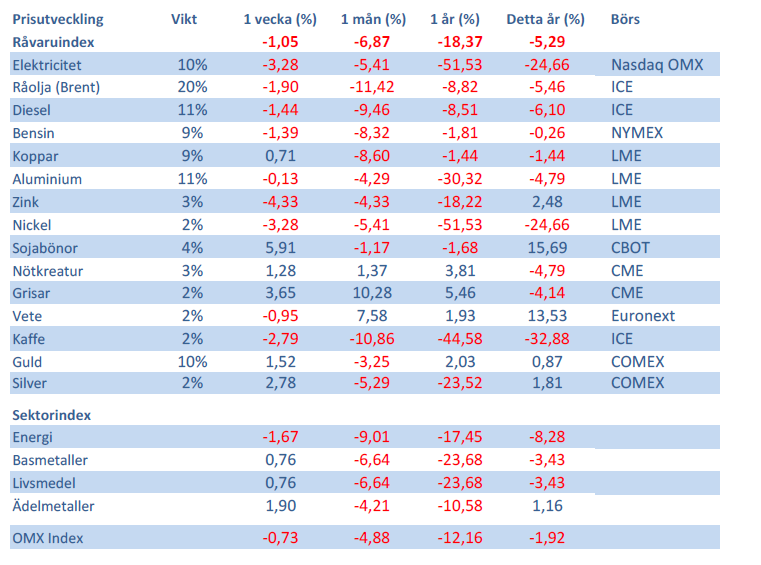
Handelsbankens råvaruindex består av de underliggande indexen för respektive råvara. Vikterna är bestämda till hälften från värdet av global produktion och till hälften från likviditeten i terminskontrakten.
[box]SHB Råvarubrevet är producerat av Handelsbanken och publiceras i samarbete och med tillstånd på Råvarumarknaden.se[/box]
Ansvarsbegränsning
Detta material är producerat av Svenska Handelsbanken AB (publ) i fortsättningen kallad Handelsbanken. De som arbetar med innehållet är inte analytiker och materialet är inte oberoende investeringsanalys. Innehållet är uteslutande avsett för kunder i Sverige. Syftet är att ge en allmän information till Handelsbankens kunder och utgör inte ett personligt investeringsråd eller en personlig rekommendation. Informationen ska inte ensamt utgöra underlag för investeringsbeslut. Kunder bör inhämta råd från sina rådgivare och basera sina investeringsbeslut utifrån egen erfarenhet.
Informationen i materialet kan ändras och också avvika från de åsikter som uttrycks i oberoende investeringsanalyser från Handelsbanken. Informationen grundar sig på allmänt tillgänglig information och är hämtad från källor som bedöms som tillförlitliga, men riktigheten kan inte garanteras och informationen kan vara ofullständig eller nedkortad. Ingen del av förslaget får reproduceras eller distribueras till någon annan person utan att Handelsbanken dessförinnan lämnat sitt skriftliga medgivande. Handelsbanken ansvarar inte för att materialet används på ett sätt som strider mot förbudet mot vidarebefordran eller offentliggörs i strid med bankens regler.
Analys
Tightening fundamentals – bullish inventories from DOE

The latest weekly report from the US DOE showed a substantial drawdown across key petroleum categories, adding more upside potential to the fundamental picture.

Commercial crude inventories (excl. SPR) fell by 5.8 million barrels, bringing total inventories down to 415.1 million barrels. Now sitting 11% below the five-year seasonal norm and placed in the lowest 2015-2022 range (see picture below).
Product inventories also tightened further last week. Gasoline inventories declined by 2.1 million barrels, with reductions seen in both finished gasoline and blending components. Current gasoline levels are about 3% below the five-year average for this time of year.
Among products, the most notable move came in diesel, where inventories dropped by almost 4.1 million barrels, deepening the deficit to around 20% below seasonal norms – continuing to underscore the persistent supply tightness in diesel markets.
The only area of inventory growth was in propane/propylene, which posted a significant 5.1-million-barrel build and now stands 9% above the five-year average.
Total commercial petroleum inventories (crude plus refined products) declined by 4.2 million barrels on the week, reinforcing the overall tightening of US crude and products.
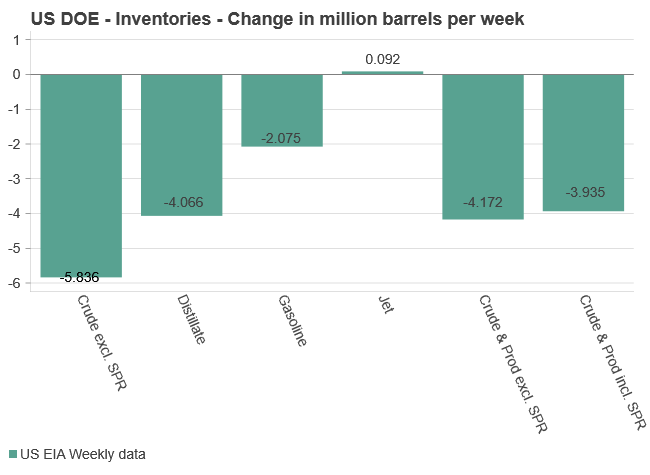

Analys
Bombs to ”ceasefire” in hours – Brent below $70

A classic case of “buy the rumor, sell the news” played out in oil markets, as Brent crude has dropped sharply – down nearly USD 10 per barrel since yesterday evening – following Iran’s retaliatory strike on a U.S. air base in Qatar. The immediate reaction was: “That was it?” The strike followed a carefully calibrated, non-escalatory playbook, avoiding direct threats to energy infrastructure or disruption of shipping through the Strait of Hormuz – thus calming worst-case fears.

After Monday morning’s sharp spike to USD 81.4 per barrel, triggered by the U.S. bombing of Iranian nuclear facilities, oil prices drifted sideways in anticipation of a potential Iranian response. That response came with advance warning and caused limited physical damage. Early this morning, both the U.S. President and Iranian state media announced a ceasefire, effectively placing a lid on the immediate conflict risk – at least for now.
As a result, Brent crude has now fallen by a total of USD 12 from Monday’s peak, currently trading around USD 69 per barrel.
Looking beyond geopolitics, the market will now shift its focus to the upcoming OPEC+ meeting in early July. Saudi Arabia’s decision to increase output earlier this year – despite falling prices – has drawn renewed attention considering recent developments. Some suggest this was a response to U.S. pressure to offset potential Iranian supply losses.
However, consensus is that the move was driven more by internal OPEC+ dynamics. After years of curbing production to support prices, Riyadh had grown frustrated with quota-busting by several members (notably Kazakhstan). With Saudi Arabia cutting up to 2 million barrels per day – roughly 2% of global supply – returns were diminishing, and the risk of losing market share was rising. The production increase is widely seen as an effort to reassert leadership and restore discipline within the group.
That said, the FT recently stated that, the Saudis remain wary of past missteps. In 2018, Riyadh ramped up output at Trump’s request ahead of Iran sanctions, only to see prices collapse when the U.S. granted broad waivers – triggering oversupply. Officials have reportedly made it clear they don’t intend to repeat that mistake.
The recent visit by President Trump to Saudi Arabia, which included agreements on AI, defense, and nuclear cooperation, suggests a broader strategic alignment. This has fueled speculation about a quiet “pump-for-politics” deal behind recent production moves.
Looking ahead, oil prices have now retraced the entire rally sparked by the June 13 Israel–Iran escalation. This retreat provides more political and policy space for both the U.S. and Saudi Arabia. Specifically, it makes it easier for Riyadh to scale back its three recent production hikes of 411,000 barrels each, potentially returning to more moderate increases of 137,000 barrels for August and September.
In short: with no major loss of Iranian supply to the market, OPEC+ – led by Saudi Arabia – no longer needs to compensate for a disruption that hasn’t materialized, especially not to please the U.S. at the cost of its own market strategy. As the Saudis themselves have signaled, they are unlikely to repeat previous mistakes.
Conclusion: With Brent now in the high USD 60s, buying oil looks fundamentally justified. The geopolitical premium has deflated, but tensions between Israel and Iran remain unresolved – and the risk of missteps and renewed escalation still lingers. In fact, even this morning, reports have emerged of renewed missile fire despite the declared “truce.” The path forward may be calmer – but it is far from stable.
Analys
A muted price reaction. Market looks relaxed, but it is still on edge waiting for what Iran will do

Brent crossed the 80-line this morning but quickly fell back assigning limited probability for Iran choosing to close the Strait of Hormuz. Brent traded in a range of USD 70.56 – 79.04/b last week as the market fluctuated between ”Iran wants a deal” and ”US is about to attack Iran”. At the end of the week though, Donald Trump managed to convince markets (and probably also Iran) that he would make a decision within two weeks. I.e. no imminent attack. Previously when when he has talked about ”making a decision within two weeks” he has often ended up doing nothing in the end. The oil market relaxed as a result and the week ended at USD 77.01/b which is just USD 6/b above the year to date average of USD 71/b.

Brent jumped to USD 81.4/b this morning, the highest since mid-January, but then quickly fell back to a current price of USD 78.2/b which is only up 1.5% versus the close on Friday. As such the market is pricing a fairly low probability that Iran will actually close the Strait of Hormuz. Probably because it will hurt Iranian oil exports as well as the global oil market.
It was however all smoke and mirrors. Deception. The US attacked Iran on Saturday. The attack involved 125 warplanes, submarines and surface warships and 14 bunker buster bombs were dropped on Iranian nuclear sites including Fordow, Natanz and Isfahan. In response the Iranian Parliament voted in support of closing the Strait of Hormuz where some 17 mb of crude and products is transported to the global market every day plus significant volumes of LNG. This is however merely an advise to the Supreme leader Ayatollah Ali Khamenei and the Supreme National Security Council which sits with the final and actual decision.
No supply of oil is lost yet. It is about the risk of Iran closing the Strait of Hormuz or not. So far not a single drop of oil supply has been lost to the global market. The price at the moment is all about the assessed risk of loss of supply. Will Iran choose to choke of the Strait of Hormuz or not? That is the big question. It would be painful for US consumers, for Donald Trump’s voter base, for the global economy but also for Iran and its population which relies on oil exports and income from selling oil out of that Strait as well. As such it is not a no-brainer choice for Iran to close the Strait for oil exports. And looking at the il price this morning it is clear that the oil market doesn’t assign a very high probability of it happening. It is however probably well within the capability of Iran to close the Strait off with rockets, mines, air-drones and possibly sea-drones. Just look at how Ukraine has been able to control and damage the Russian Black Sea fleet.
What to do about the highly enriched uranium which has gone missing? While the US and Israel can celebrate their destruction of Iranian nuclear facilities they are also scratching their heads over what to do with the lost Iranian nuclear material. Iran had 408 kg of highly enriched uranium (IAEA). Almost weapons grade. Enough for some 10 nuclear warheads. It seems to have been transported out of Fordow before the attack this weekend.
The market is still on edge. USD 80-something/b seems sensible while we wait. The oil market reaction to this weekend’s events is very muted so far. The market is still on edge awaiting what Iran will do. Because Iran will do something. But what and when? An oil price of 80-something seems like a sensible level until something do happen.
-

 Nyheter4 veckor sedan
Nyheter4 veckor sedanStor uppsida i Lappland Guldprospekterings aktie enligt analys
-

 Nyheter4 veckor sedan
Nyheter4 veckor sedanSilverpriset släpar efter guldets utveckling, har mer uppsida
-

 Nyheter3 veckor sedan
Nyheter3 veckor sedanUppgången i oljepriset planade ut under helgen
-

 Nyheter2 veckor sedan
Nyheter2 veckor sedanMahvie Minerals växlar spår – satsar fullt ut på guld
-

 Nyheter3 veckor sedan
Nyheter3 veckor sedanLåga elpriser i sommar – men mellersta Sverige får en ökning
-

 Analys3 veckor sedan
Analys3 veckor sedanVery relaxed at USD 75/b. Risk barometer will likely fluctuate to higher levels with Brent into the 80ies or higher coming 2-3 weeks
-

 Nyheter2 veckor sedan
Nyheter2 veckor sedanOljan, guldet och marknadens oroande tystnad
-

 Nyheter2 veckor sedan
Nyheter2 veckor sedanJonas Lindvall är tillbaka med ett nytt oljebolag, Perthro, som ska börsnoteras


